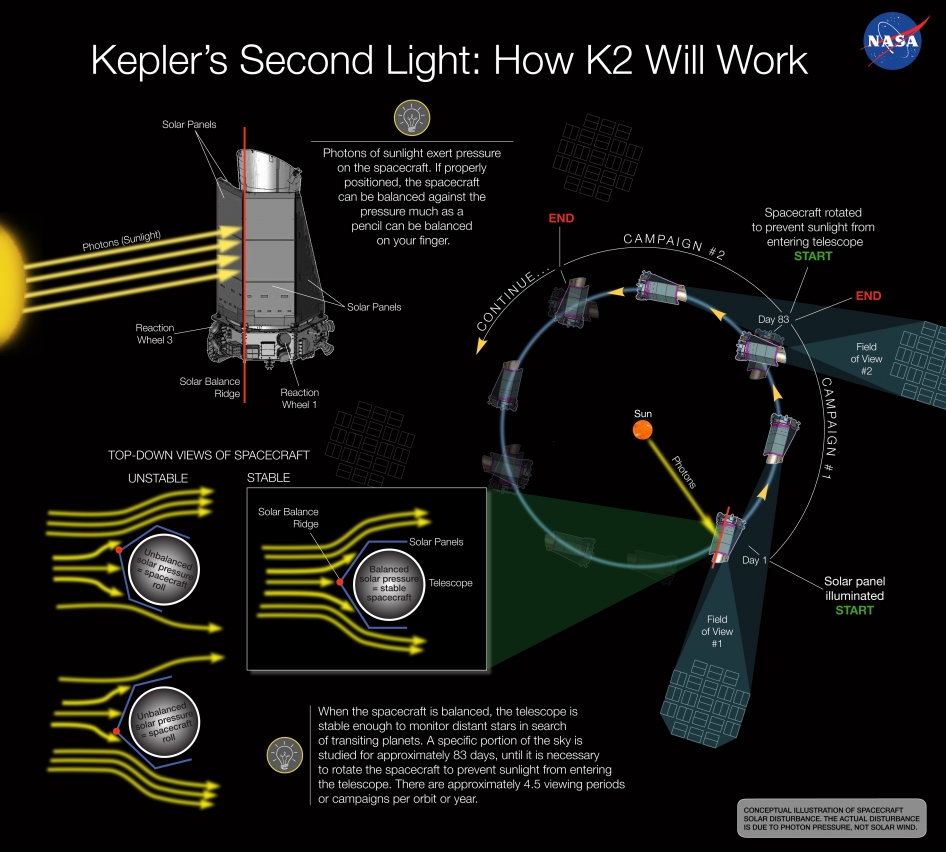It looks like you're using an Ad Blocker.
Please white-list or disable AboveTopSecret.com in your ad-blocking tool.
Thank you.
Some features of ATS will be disabled while you continue to use an ad-blocker.
share:
I meant to post this earlier and I think many mainstream news outlets have missed this because the data was released by NASA right around Christmas on
December 23.
A New Large Batch of Earth-like Worlds Candidates
ESI = Earth Similarity Index - Click here for more on this.
Earth of course has an ESI of 1.0. Mars has an ESI of 0.64. So that there are candidates with ESI's as high as 0.94 is amazing.

It should be stressed these are planet Candidates. Meaning they are unconfirmed, however 90% of Kepler's planet candidates are likely to be confirmed.
Here are the confirmed planets.
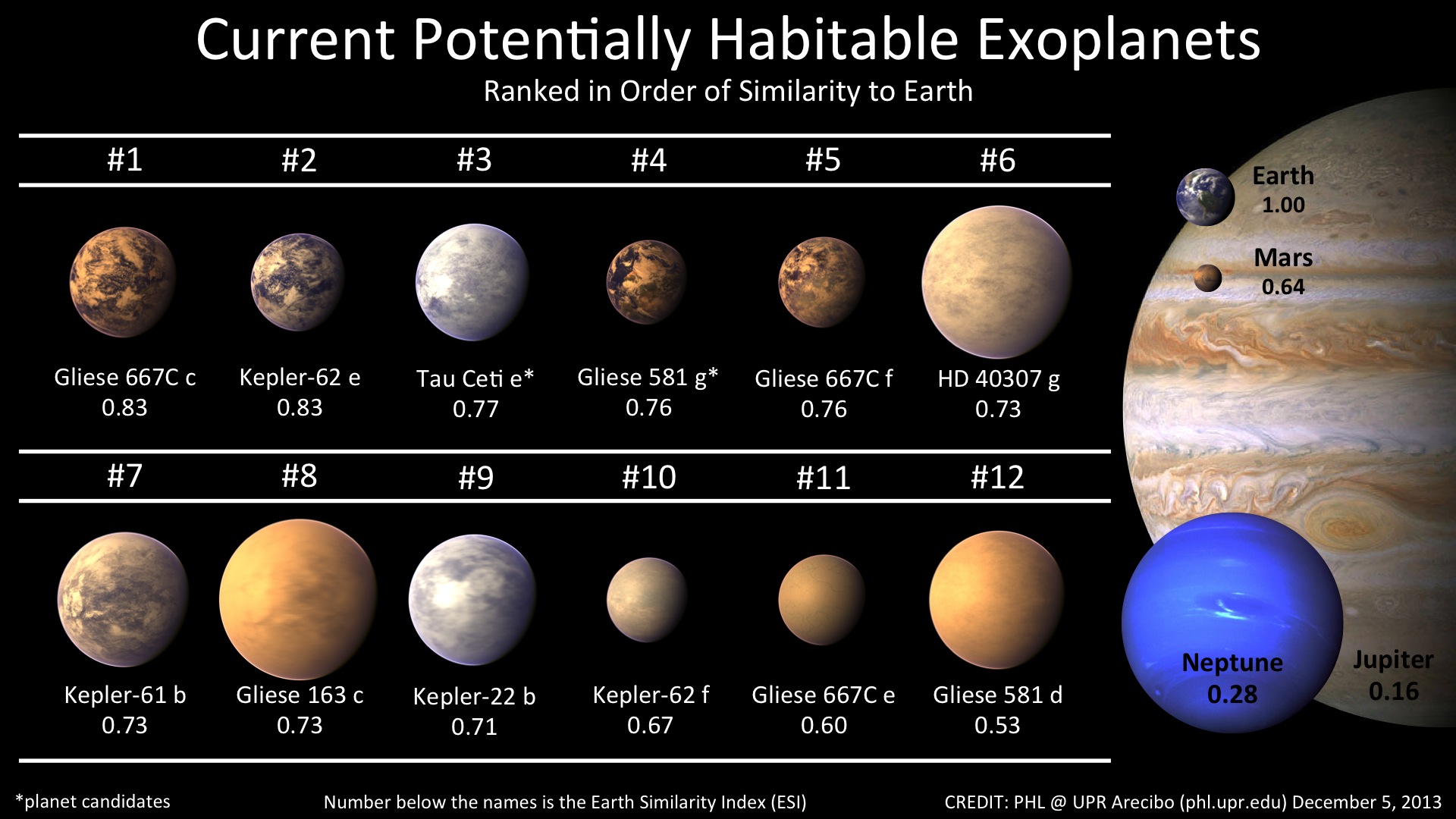
There may be more information on these candidates or other habitable zone exoplanets next week so stay tuned!
A New Large Batch of Earth-like Worlds Candidates
The NASA Kepler added 1,089 new objects of interest from the Q1-16 release to its KOI database. All are objects of interest pending further verification (not dispositioned) to be included among their current 3,603 exoplanets candidates. The new batch includes up to 172 potentially habitable exoplanets, the largest number ever in any previous data release. However, they might be harder to confirm since most are not part of multi-planet systems or don't have many transit events. The table below lists these 172 objects sorted by Earth similarity (i.e. ESI). Those with ESI above 0.90 are particularly the most interesting ones. Check here for some definitions used in this table.
ESI = Earth Similarity Index - Click here for more on this.
Earth of course has an ESI of 1.0. Mars has an ESI of 0.64. So that there are candidates with ESI's as high as 0.94 is amazing.

It should be stressed these are planet Candidates. Meaning they are unconfirmed, however 90% of Kepler's planet candidates are likely to be confirmed.
Here are the confirmed planets.

There may be more information on these candidates or other habitable zone exoplanets next week so stay tuned!
reply to post by JadeStar
My, it's getting to be a crowded neighborhood.
And to think that these planets are very close to Earth relative to our area of the galaxy, which is just a smudgeon of a minor tiny itty-bitty nothing-to-write-home-about section of the Milky Way.
My, it's getting to be a crowded neighborhood.
And to think that these planets are very close to Earth relative to our area of the galaxy, which is just a smudgeon of a minor tiny itty-bitty nothing-to-write-home-about section of the Milky Way.
edit on 2-1-2014 by Aleister because: (no reason given)
edit on 2-1-2014
by Aleister because: (no reason given)
reply to post by JadeStar
I've been exploring the site sourced in your fine OP, and have come away with much new information, including: a simulated transit photo of the moon Pandora (from "Avatar"). The Earthlike exoplanets and exomoons candidates listed in their data will provide, I would think, plenty of work for the James Webb telescope (counting the years and the minutes until that one goes up), which should add more information on many of these.
For a look at how Pandora would have looked to Kepler, as well as a simulation of how this all works by simulating a look at what Earth would look like from another civilization's Kepler:
phl.upr.edu...
I've been exploring the site sourced in your fine OP, and have come away with much new information, including: a simulated transit photo of the moon Pandora (from "Avatar"). The Earthlike exoplanets and exomoons candidates listed in their data will provide, I would think, plenty of work for the James Webb telescope (counting the years and the minutes until that one goes up), which should add more information on many of these.
For a look at how Pandora would have looked to Kepler, as well as a simulation of how this all works by simulating a look at what Earth would look like from another civilization's Kepler:
phl.upr.edu...
Figure 1. Animated simulation of the transit of Earth around the Sun as it will appear from far away to a Kepler-like telescope. The solid line is the expected stellar flux and the dots are the observed values, assuming a 40 ppm combined noise. Time is with respect of mid-transit. This simulation does not include the Moon. A MP4 movie version of this animation is also available.
edit on 3-1-2014 by Aleister because: (no reason given)
Aleister
reply to post by JadeStar
I've been exploring the site sourced in your fine OP, and have come away with much new information, including: a simulated transit photo of the moon Pandora (from "Avatar"). The Earthlike exoplanets and exomoons candidates listed in their data will provide, I would think, plenty of work for the James Webb telescope (counting the years and the minutes until that one goes up), which should add more information on many of these.
For a look at how Pandora would have looked to Kepler, as well as a simulation of how this all works by simulating a look at what Earth would look like from another civilization's Kepler:
phl.upr.edu...
Figure 1. Animated simulation of the transit of Earth around the Sun as it will appear from far away to a Kepler-like telescope. The solid line is the expected stellar flux and the dots are the observed values, assuming a 40 ppm combined noise. Time is with respect of mid-transit. This simulation does not include the Moon. A MP4 movie version of this animation is also available.
edit on 3-1-2014 by Aleister because: (no reason given)
That is one of my favorite sites. It's updated fairly frequently and has information that is both accessible to the layperson and for astronomy geeks like me
I am soooo glad you enjoy it. Pass it on!
At inferred average surface temperatures of 299 and 300 Kelvins ( 79 and 80 F., 26 & 27 C.) , these two planets sound admirably suited for life. For
comparison's sake, Earth's average temperature is is 288 K, 59 F, 15 C. At 974 and 1874 light years distance, they seem rather remote to our
parochial sense of scale. No doubt we'll soon be finding planets with such equitable climates, much nearer by.
edit on 4-1-2014 by Ross 54
because: corrected erroneous figure
Ross 54
At inferred average surface temperatures of 299 and 300 Kelvins ( 79 and 80 F., 26 & 27 C.) , these two planets sound admirably suited for life. For comparison's sake, Earth's average temperature is is 288 K, 59 F, 15 C. At 974 and 1874 light years distance, they seem rather remote to our parochial sense of scale. No doubt we'll soon be finding planets with such equitable climates, much nearer by.edit on 4-1-2014 by Ross 54 because: corrected erroneous figure
Exactly.
Their distance has to do with the fact that average distance of the stars Kepler looked at was something like 600 light years (some closer, some further) from us.
People often ask why we'd look for planets around stars so far away.
This was done because the field of stars Kepler studied gave a good statistical representation of the stars in our galaxy. )
That helps to design the instruments on the next telescope which -will- look at all of the nearest stars.
Meaning that the results of studying it would be able to tell us how frequently M-class (earth-like) planets are in the whole Milky Way galaxy and perhaps the universe.
That helps to design the instruments on the next telescope which -will- look at all of the nearest stars.
The good news is that they are pretty frequent (around 22% +/- 8% for G-stars like our Sun and around 48% or roughly half for cooler and numerous M-stars).
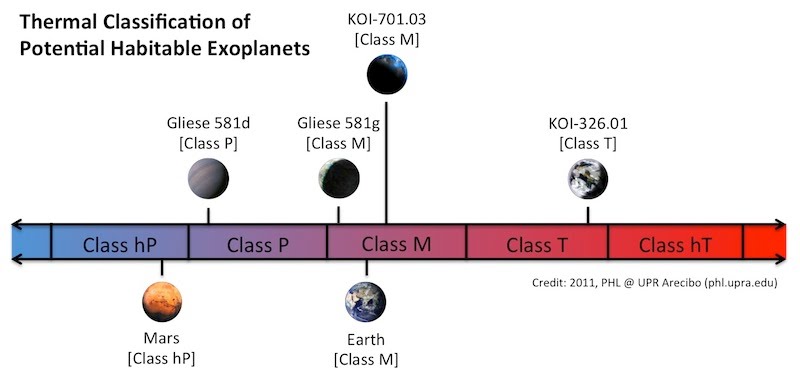
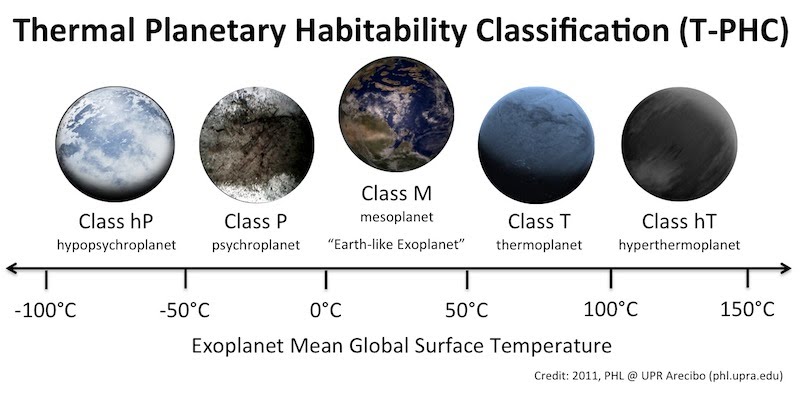
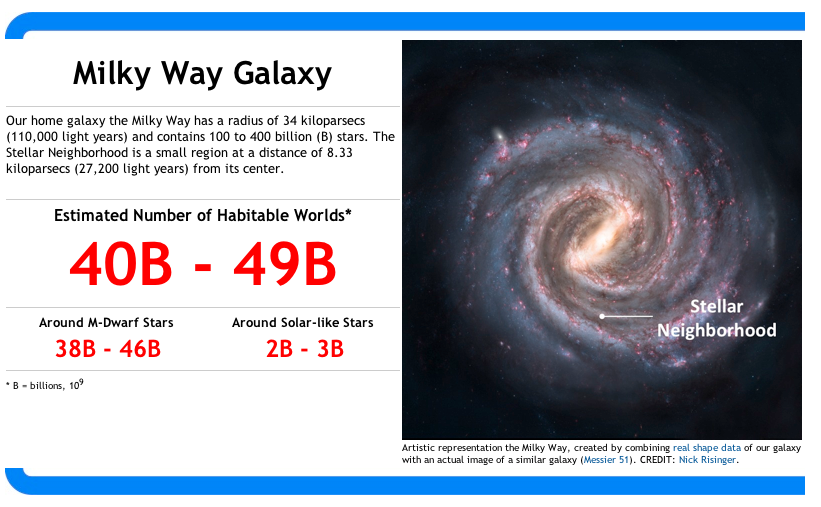
There will be future telescopes which will be able to study the stars closer to Earth for earthlike planets. One mission called TESS launches in 2017 and it will only be looking at the nearest stars and bright stars for transiting planets.
It basically may tell us where the next closest Earth is.
Estimates based on Kepler data give it a 94% chance of being within 10 light years with the average distance between such worlds being around 6.4 lightyears.

Kepler may get a new mission called K2 to look at other stars (which will include a fair amount of nearby stars).
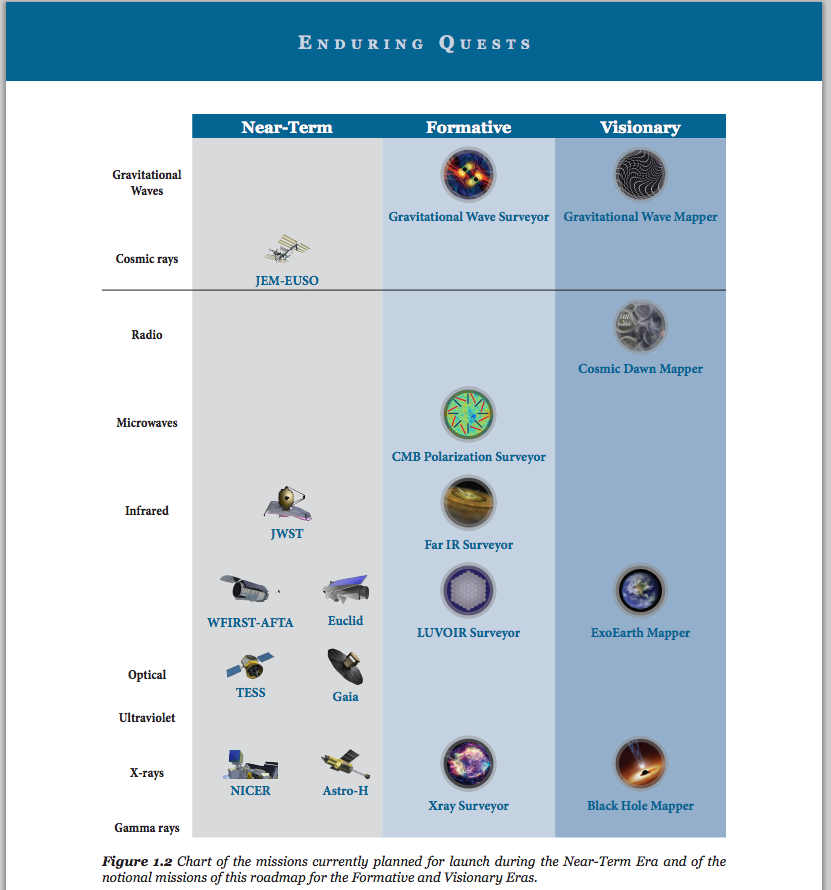
(Near Term = 10 years, Formative = 20 years, Visionary = 30 years)
Beyond Kepler and TESS there are plans for a telescope (called the LUVOIR Surveyor in the chart above)which would characterize the atmospheres of these worlds to tell us if there is life on them.
And Beyond that a telescope (called the ExoEarth Mapper in the chart above) which will actually take detailed pictures of them similar to this picture of Earth from the EPOXI mission is planned:
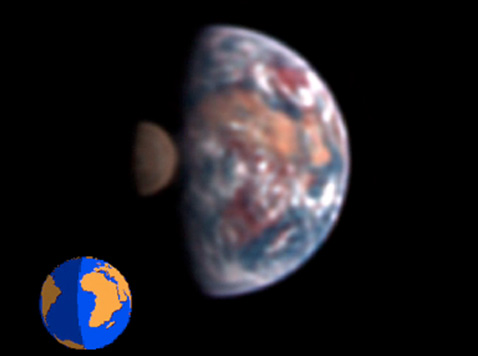
Giving us perhaps a slightly lower res version of a picture like this of a planet around a nearby star (perhaps even as close as Alpha Centauri or Barnard's Star).
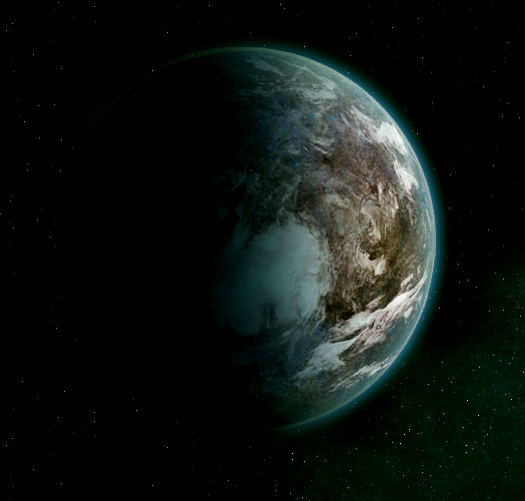
(artist conception of Kepler 22 b)
edit on 4-1-2014 by JadeStar because: (no reason given)
Of stars within 10 light years, Lalande 21185 and Alpha Centauri seem the likeliest to host planets with civilizations on them. The other stars
within this distance appear to be either too young, unless we assume colonization from other systems, or seem to be flare stars, which makes
habitability at least questionable. Civilizations at such small distances could already be aware of our existence, if their astronomical abilities are
only very slightly in advance of our own.
Ross 54
Of stars within 10 light years, Lalande 21185 and Alpha Centauri seem the likeliest to host planets with civilizations on them. The other stars within this distance appear to be either too young, unless we assume colonization from other systems, or seem to be flare stars, which makes habitability at least questionable. Civilizations at such small distances could already be aware of our existence, if their astronomical abilities are only very slightly in advance of our own.
I wish I were that optimistic. Life doesn't necessarily mean intelligent life.
That said, I would not doubt we find life within 10 light years distance of the Earth. And if we did that would be one of the most amazing discoveries in human history.
By the way, if we can stick around for the next 30 years this is on the horizon:
From NASA:

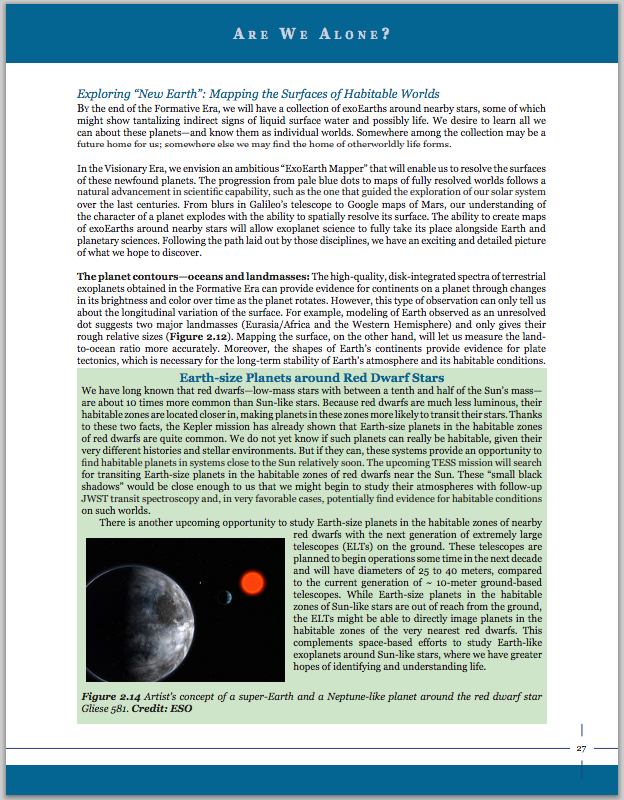
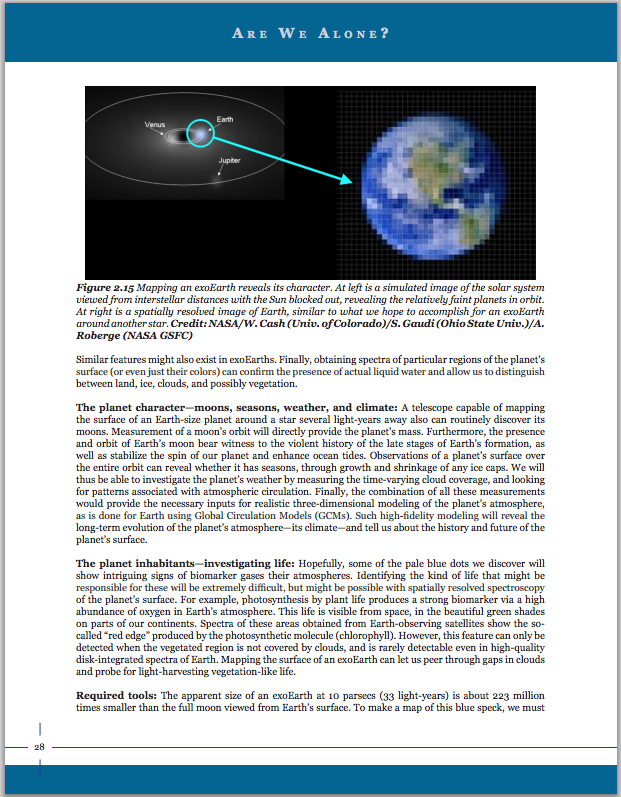
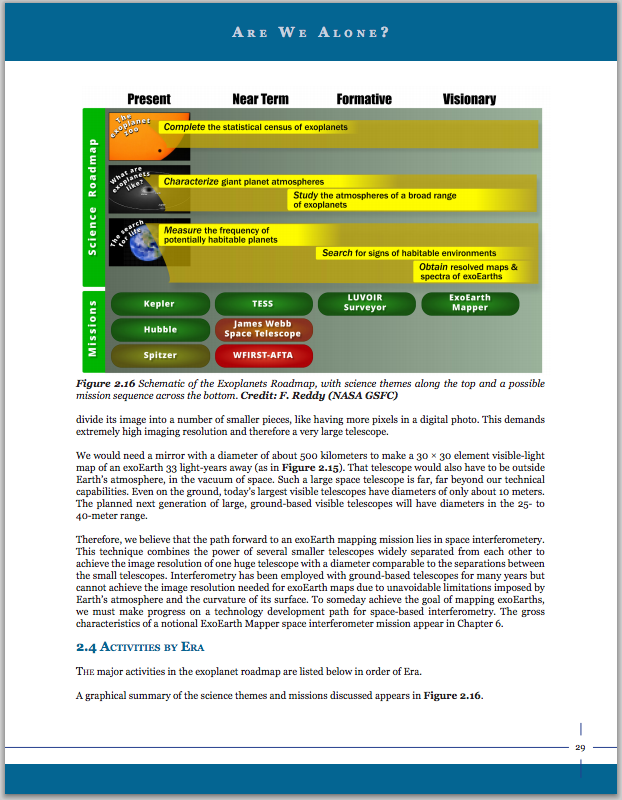
Was considering at that moment the simplified problem: if there were to be indigenous intelligent life within 10 l.y., where would be the most
likely places to find it?
The Fermi Paradox has long suggested to me that the galaxy is extensively inhabited, and has been for a very great length of time. The way Dr. Fermi framed the problem, many of these supposed galactic inhabitants would be living in solar systems other than the one in which their species originated.
Is it unlikely that the stars nearest us happened to give rise to intelligent life independently ? Perhaps. Is intelligent life there still unlikely, if we allow for interstellar migration? Maybe not so much.
The Fermi Paradox has long suggested to me that the galaxy is extensively inhabited, and has been for a very great length of time. The way Dr. Fermi framed the problem, many of these supposed galactic inhabitants would be living in solar systems other than the one in which their species originated.
Is it unlikely that the stars nearest us happened to give rise to intelligent life independently ? Perhaps. Is intelligent life there still unlikely, if we allow for interstellar migration? Maybe not so much.
edit on 5-1-2014 by Ross 54 because: removed superfluous word.
edit on 5-1-2014 by Ross 54 because: added clarifying
phrase
Ross 54
Was considering at that moment the simplified problem: if there were to be indigenous intelligent life within 10 l.y., where would be the most likely places to find it?
The Fermi Paradox has long suggested to me that the galaxy is extensively inhabited, and has been for a very great length of time. The way Dr. Fermi framed the problem, many of these supposed galactic inhabitants would be living in solar systems other than the one in which their species originated.
Is it unlikely that the stars nearest us happened to give rise to intelligent life independently ? Perhaps. Is intelligent life there still unlikely, if we allow for interstellar migration? Maybe not so much.
edit on 5-1-2014 by Ross 54 because: removed superfluous word.edit on 5-1-2014 by Ross 54 because: added clarifying phrase
Considering the amount of red dwarfs in this question and the longevity of their lives, one would have to ask why would they want to leave entirely? Especially if they built up extensive infrastructure around their home system it seems like they'd eat least keep some people behind to maintain it.
Regarding your question, maybe consult Habcat? I might have a look in Celestia and post a screenshot for you later tonight of the Habcat stars within 10 ly.
We're in for exciting times ahead regardless of what the answer to the Fermi Paradox is
edit on 5-1-2014 by JadeStar because: (no reason
given)
I wasn't thinking so much in terms of a species leaving one star system entirely, in favor of another. In general, it could be more an expansion of
territory; something not wholly unlike what our ancestors did over the past few million years.
Our kind spread from a corner of East Africa to the whole inhabitable surface of our planet, yet there are still people in East Africa. Territorial expansion is not unique to the human line. It seems to apply to life in general, whenever this is possible and advantageous. Perhaps not too much a leap to imagine this applying to extraterrestrial life, and ET intelligent life, as well.
Our kind spread from a corner of East Africa to the whole inhabitable surface of our planet, yet there are still people in East Africa. Territorial expansion is not unique to the human line. It seems to apply to life in general, whenever this is possible and advantageous. Perhaps not too much a leap to imagine this applying to extraterrestrial life, and ET intelligent life, as well.
edit on 6-1-2014 by Ross 54 because: improved
paragraph structure
Ross 54
I wasn't thinking so much in terms of a species leaving one star system entirely, in favor of another. In general, it could be more an expansion of territory; something not wholly unlike what our ancestors did over the past few million years.
Our kind spread from a corner of East Africa to the whole inhabitable surface of our planet, yet there are still people in East Africa. Territorial expansion is not unique to the human line. It seems to apply to life in general, whenever this is possible and advantageous. Perhaps not too much a leap to imagine this applying to extraterrestrial life, and ET intelligent life, as well.edit on 6-1-2014 by Ross 54 because: improved paragraph structure
Good points.
So the logical place would be to look at all nearby M-class, red dwarf stars as a species which evolved around one may search out worlds around similar stars since they would be used to their environment and they are plentiful in the galaxy.
I'd be concerned about the potential for younger M class stars to flare, increasing their energy output markedly. Older M class stars, as a group,
might represent more desirable situations for habitation, and so, a better field to search in.
Ross 54
I'd be concerned about the potential for younger M class stars to flare, increasing their energy output markedly. Older M class stars, as a group, might represent more desirable situations for habitation, and so, a better field to search in.
Exactly. Older M stars would be better than younger ones.
I'm sure you know about this list of the top 100 nearest stars (ranked in order). You're interested in everything 1 through 11. (Stars within 10 lightyears)
www.chara.gsu.edu...
I'm sorry I have not been able to put it in graphic form but I think there may be some graphics on the RECONS website.
edit on 6-1-2014 by
JadeStar because: (no reason given)
NASA’s planet hunt project and their Mars missions are IMV the best (and so far) the most important space project ever. As far as I have understood
, the Kepler telescope is monitoring a point in the sky which are somewhere between the Cygnus and the Lyra constellation. Does anyone know why this
area was chosen?
reply to post by JadeStar
K I've kicked posting this around for about twenty minutes. I'm only
going ahead cause I don't see it mentioned in the OP. Try to ignore
they way this guy sounds and the mis-referreces to a brown dwarf
planet? Can you speak to this a little bit OP?
K I've kicked posting this around for about twenty minutes. I'm only
going ahead cause I don't see it mentioned in the OP. Try to ignore
they way this guy sounds and the mis-referreces to a brown dwarf
planet? Can you speak to this a little bit OP?
helius
NASA’s planet hunt project and their Mars missions are IMV the best (and so far) the most important space project ever. As far as I have understood , the Kepler telescope is monitoring a point in the sky which are somewhere between the Cygnus and the Lyra constellation. Does anyone know why this area was chosen?
Yes. The stars in that patch of sky were chosen because it provides a good statistical representation of the stars in our Milky Way galaxy. By getting good stats on those stars and planets we now have a better idea what is common in the galaxy.
Kepler's main mission was to find how frequent planets like the Earth (small, rocky) were in the galaxy around different types of stars as well as how many of them orbited within the habitable zone of its host star where a planet can have liquid oceans, lakes, rivers, etc on its surface.
It accomplished that mission and so much more!
And I agree with your post. This stuff is the real life "star trek" going on right now and is why most people think we should be exploring space: "to seek out new life and civilizations".
edit on 7-1-2014 by JadeStar because: (no reason given)
randyvs
reply to post by JadeStar
K I've kicked posting this around for about twenty minutes. I'm only
going ahead cause I don't see it mentioned in the OP. Try to ignore
they way this guy sounds and the mis-referreces to a brown dwarf
planet? Can you speak to this a little bit OP?
The guy misunderstood a lot of information about its composition. I don't know where to begin.
Is there anything specific you had a question about? Random dudes on Youtube aren't usually the best sources for space information though there are some good channels:
I recommend Universe Today for astronomy and astrophysics stuff (ie: exoplanets, black holes, etc)
www.youtube.com...
and the Space Vidcast show for general space stuff (ie: launches, missions, etc)
www.youtube.com...
and the SETI Institute Channel for big picture stuff (time travel, theoretical physics, how life started on the early earth, searches for life in space, etc)
www.youtube.com...
As for Ceres...
Ceres is a big asteroid. Big enough that it in a category called Dwarf Planets. It's smaller than our moon but still a substantial sized object in the solar system.
Its interesting because asteroids are stuff left over from when the solar system formed and have been mostly undisturbed so of course we're interested in studying it in closer detail because it can tell us more about how our planet and the others formed.
NASA's Dawn Mission will arrive there in March of 2015 and you'll hear a lot more about Ceres then when it arrives in orbit.
LMAO at the one "photo" he used in the video with blue oceans. It's not Ceres it's an artist's interpretation of an earthlike exoplanet. Probably taken from this article.
The cringeworthy Youtuber seems to have knowingly tried to deceive you for hits most likely.
edit on 7-1-2014 by JadeStar because: (no reason
given)
reply to post by JadeStar
That's a fair position...but to be totally fair, there's nothing to say that it isn't intelligent either.
In fact, it's just as possible that life is existing right across the spectrum, as it does here on Earth.
Single cell all the way to us.
And it would also naturally follow that the intelligent life that is certain to exist, is at every technological level there is, from a 'no-tech' tech to the levels we ourselves would reach in a couple of thousand years or more, and everything in between.
Life doesn't necessarily mean intelligent life.
That's a fair position...but to be totally fair, there's nothing to say that it isn't intelligent either.
In fact, it's just as possible that life is existing right across the spectrum, as it does here on Earth.
Single cell all the way to us.
And it would also naturally follow that the intelligent life that is certain to exist, is at every technological level there is, from a 'no-tech' tech to the levels we ourselves would reach in a couple of thousand years or more, and everything in between.
As I promised I'm posting an update from the 223rd AAS:
From Astrobites:
astrobites.org...
There's more over on Astrobites on the Exoplanet session.
From Astrobites:
astrobites.org...
Astrobites is again liveblogging AAS! In order to avoid inundating our readers’ RSS feeds, we’ll be updating this post with short paragraphs about the talks we’ve heard and posters we’ve seen. So keep checking back throughout Monday afternoon!
12:45 pm: Kepler Town Hall
On behalf of the Kepler team, Steve Howell shared the latest results from the Kepler mission and discussed future plans for the spacecraft. The Kepler team has prepared a paper (led by Jason Rowe) announcing the Q1-12 planet candidate list. This list is already available on NExSci and contains 3538 total planet candidates. The Kepler team is also working hard to uniformly process all of the quarter 1-16 data and will publish a paper (led by Fergal Mullally) about the Q1-16 planet candidate list later this year. All Kepler data should be available by June 2014.
As you may know, the Kepler team is proposing to use the Kepler spacecraft in an extended mission known as K2. The Kepler spacecraft now has only two working reaction wheels, but the Kepler team has figured out that they will be able to use the spacecraft to observe fields in the ecliptic plane. These observations will last roughly 80 days and have been dubbed “campaigns.” The Kepler team is eager for feedback from the community about the exact placement of these fields along the ecliptic. Check out the list of proposed field positions on the Kepler website and share your comments with the team. The fun begins on March 1 with a roughly 80 day performance demonstration of 5000-10,000 targets in Gemini.
There's more over on Astrobites on the Exoplanet session.
edit on 7-1-2014 by JadeStar because: (no reason given)
edit on 7-1-2014 by JadeStar because: (no reason
given)
new topics
-
Mass Extinctions May Hold the Key to Life in the Universe
Education and Media: 3 hours ago -
Can we be certain that Jesus Christ was born on December 25th?
Religion, Faith, And Theology: 5 hours ago -
RIP Merrily Harpur British Big Cat Realist
Cryptozoology: 7 hours ago
top topics
-
Panamanian President-“every square meter” of the Panama Canal belongs to Panama.
New World Order: 14 hours ago, 12 flags -
Australian mercenary caught and crying as he is a prisoner of war.
Other Current Events: 13 hours ago, 11 flags -
NYPD arrests migrant who allegedly set woman on fire on subway train, watched her burn to death
Breaking Alternative News: 16 hours ago, 10 flags -
JILL BIDEN Wants JOE to Punish Democrats Who Forced Him to Leave Office in Disgrace on 1.20.2025.
2024 Elections: 14 hours ago, 9 flags -
RIP Merrily Harpur British Big Cat Realist
Cryptozoology: 7 hours ago, 7 flags -
Mass Extinctions May Hold the Key to Life in the Universe
Education and Media: 3 hours ago, 4 flags -
Can we be certain that Jesus Christ was born on December 25th?
Religion, Faith, And Theology: 5 hours ago, 2 flags
active topics
-
Panamanian President-“every square meter” of the Panama Canal belongs to Panama.
New World Order • 23 • : grey580 -
-@TH3WH17ERABB17- -Q- ---TIME TO SHOW THE WORLD--- -Part- --44--
Dissecting Disinformation • 3793 • : Thoughtful3 -
Can we be certain that Jesus Christ was born on December 25th?
Religion, Faith, And Theology • 22 • : FullHeathen -
Well, here we go red lines crossed Biden gives the go ahead to use long range missiles
World War Three • 404 • : CriticalStinker -
The Daily Mail trying to imply “it’s aliens”
Dissecting Disinformation • 16 • : andy06shake -
NYPD arrests migrant who allegedly set woman on fire on subway train, watched her burn to death
Breaking Alternative News • 25 • : Flyingclaydisk -
F-18 shot down over Red Sea....by our own Destroyer?
Other Current Events • 13 • : Cosmo14 -
Mass Extinctions May Hold the Key to Life in the Universe
Education and Media • 1 • : BeyondKnowledge3 -
Australian mercenary caught and crying as he is a prisoner of war.
Other Current Events • 32 • : BedevereTheWise -
‘Something horrible’: Somerset pit reveals bronze age cannibalism
Ancient & Lost Civilizations • 19 • : Scratchpost

